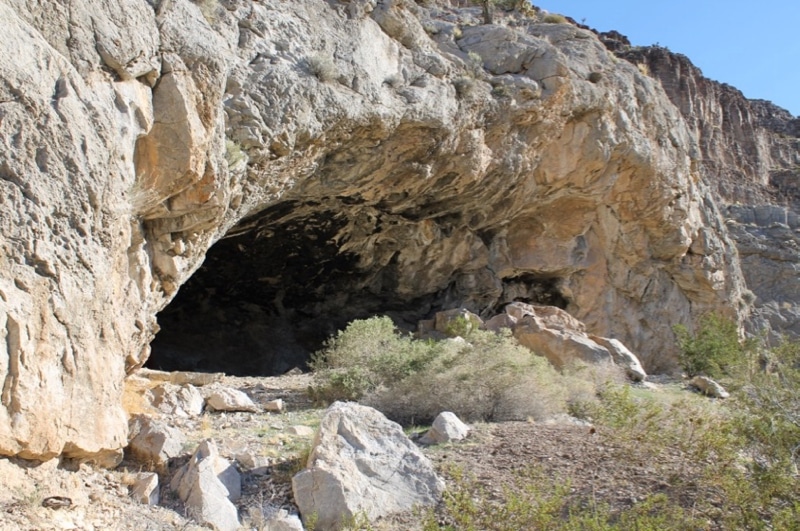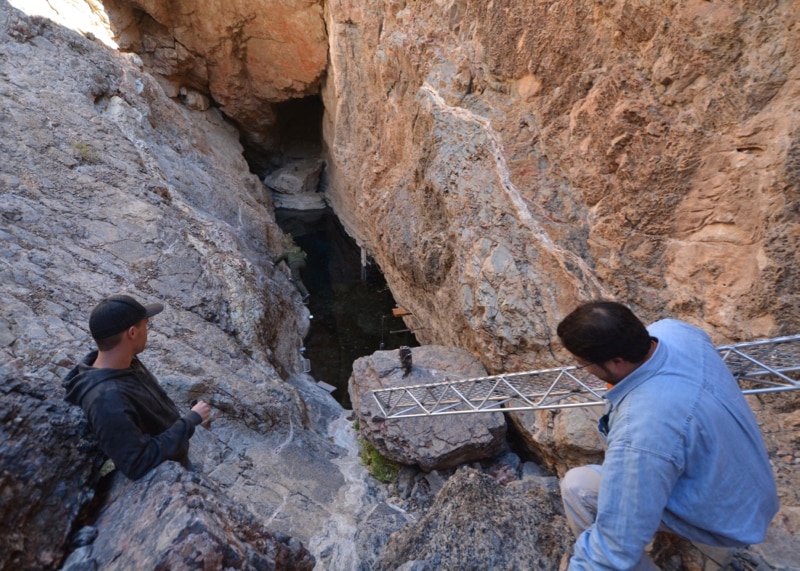Above: Cave opening at the Mule Springs Rockshelter in southern Nevada's Spring Mountain Range. Credit: Jeffrey Wedding, DRI. Las Vegas, NV (April 24, 2018): If you want to know about your ancestors today, you can send a little saliva to a company where – for a...
New research improves prospects for imperiled Devils Hole Pupfish in captivity
Above: Researchers Joshua Sackett (left) and Duane Moser (right) of DRI help National Park Service officials move scaffolding infrastructure during a routine sampling visit to Devils Hole on December 13, 2014. Credit: Jonathan Eisen. DRI study finds key differences...

